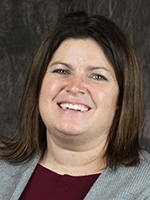
Wise Investments in Heifer Raising – Cody Yanzick and Ann Hoskins, Vita Plus
 By Cody Yanzick, Vita Plus dairy specialist, and Ann Hoskins, Vita Plus calf products coordinator
By Cody Yanzick, Vita Plus dairy specialist, and Ann Hoskins, Vita Plus calf products coordinatorCalves are naturally herd animals, but the transition period is often the first time they are grouped with others, bringing about a set of challenges that need specialized attention. Limiting stress on calves can offer some of the greatest paybacks in terms of health and performance.
Handling
All calf employees should be well trained in animal handling. Make sure your actions portray what you expect from employees.
Group size
Field experience indicates groups of eight to 10 calves works well – at least for the initial post-weaning transition period of three to four weeks. It is always best to give these animals a couple of weeks to adjust before moving again.
Calf health
Because pen moves and grouping can cause stress for calves, they are often more vulnerable to disease pressure. Abrupt diet changes will also cause stress. Closely monitor newly moved transition calves to catch any early signs of disease.
Innovative feed products combine powerful direct-fed microbials with mannan oligosaccharides and a balance of vitamins and trace minerals. These products can be used during the transition period to promote feed intake and intestinal function.
 Bedding
Bedding
A bedded pack of straw or sawdust works well compared to freestalls for these young animals. Most calves have never been exposed to concrete or bare ground, so they need to “gain a footing” on new surfaces. In some cases, a small amount of bedding on the scrape alley can offer comfort and familiarity until the calves become comfortable with the new pen.
Housing
Regardless of barn style, it must be well-ventilated, provide easy access for handling and moving calves, and allow for easy cleaning and bedding. That’s why retrofitting old barns for calf pens can present challenges. If you are using an old facility, work closely with your calf consultant to design pens that allow for adequate ventilation and bedding in all seasons.
Feedbunk design
Young calves have a hard time stretching through bars to reach feed on the ground, especially if they are used to eating from raised pails. A raised bunk at the proper neck height with slant bars works well. Drive-by feeding with slant bars can work equally well, but feed push-ups become more critical.
Water
Water must be easily accessible, preferably on the fenceline, as calves can find them with less effort. Eliminate any barriers or obstacles that may deter calves from drinking.
Rations
Transition calf rations need to be designed with both quality and feed availability in mind. Forage quality is as important to the young calf as it is to a high-producing dairy cow.
The following is a typical ration program that has worked well. This gradual change from starter to TMR helps prevent stress that can occur with abrupt diet changes:
- Feed the same starter grain as calves received in individual pens for seven to 10 days after moving to group pens.
- Switch to a transition TMR, which is a blend of the starter grain and a stage one grower TMR, for seven to 10 days.
- Feed a stage one grower from 3 to 4 months old (or starting with a 200-pound calf). This grower incorporates dry hay, haylage, corn silage and concentrate.
- Feed a stage two grower from 4 to 6 months old (or starting with a 275-pound calf). This grower contains a higher amount of forage than the stage one grower.
The investment pays off
Calves are critical to the success of your future dairy business. They need to be treated with care and respect. Investing this time and attention now can pay dividends when healthy, strong heifers enter your milking herd.
This article was originally written for the March 12, 2018 issue of Progressive Dairyman. Click here for the original article.
| Category: |
Facility design Starting Strong - Calf Care Transition and reproduction |

